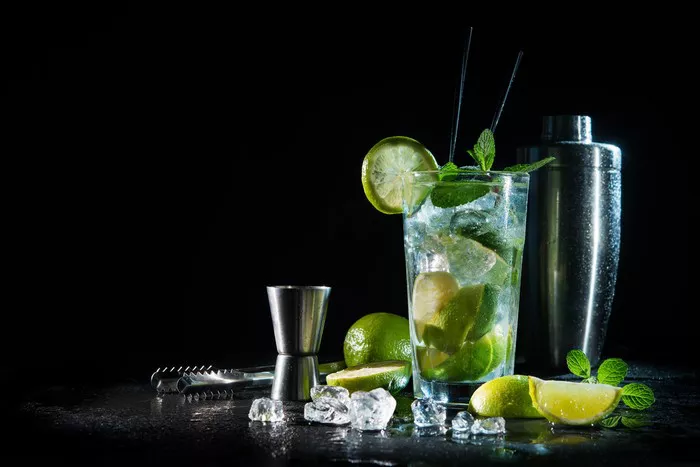In the realm of mixology, cocktails are more than just beverages; they are expressions of artistry and taste that delight the senses and evoke emotions. Among the plethora of cocktail creations, the “Hugo” stands out as a refreshing and captivating libation that has gained popularity in recent years. With its elegant combination of flavors and its visually appealing presentation, the Hugo cocktail has become a favorite choice for those seeking a sip of sophistication. This article takes you on a journey into the world of mixology as we explore the ingredients, history, and nuances that make the Hugo cocktail a delightful experience.
The Hugo: A Blend of Elegance and Flavor
The Hugo cocktail is a masterful blend of light and refreshing ingredients that come together harmoniously, creating a drink that is both visually appealing and delightfully aromatic. Its subtle floral and citrus notes make it a perfect choice for warm weather or social gatherings.
The Ingredients: A Symphony of Flavors
The Hugo cocktail is composed of a carefully selected ensemble of ingredients, each contributing its unique flavor and aroma to the final composition.
Prosecco: At the heart of the Hugo is Prosecco, a sparkling wine originating from Italy. Its effervescence adds a lively and celebratory element to the cocktail.
Elderflower Liqueur: Elderflower liqueur, often in the form of St-Germain, contributes a delicate floral essence with hints of honey and lychee. It lends the cocktail its distinctive aromatic profile.
Soda Water: Soda water or sparkling water provides the cocktail with its effervescence, enhancing the overall refreshing quality of the drink.
Fresh Mint Leaves: Fresh mint leaves are a key component that adds a burst of herbal freshness to the cocktail. They also contribute to the cocktail’s visual appeal, serving as a vibrant garnish.
Lime or Lemon Wedges: Lime or lemon wedges are often added to the Hugo cocktail to provide a balanced citrusy zing that complements the floral and herbal notes.
The Art of Mixology: Crafting the Hugo Cocktail
The beauty of the Hugo cocktail lies not only in its flavor profile but also in its presentation. Here’s how to create this elegant libation:
Chill the Glass: Begin by chilling a wine glass or a tall glass. You can achieve this by placing the glass in the refrigerator for a short while or filling it with ice water and letting it sit for a few minutes.
Add Fresh Mint Leaves: Gently muddle a few fresh mint leaves at the bottom of the glass. Muddling releases the mint’s essential oils and aroma, enhancing the cocktail’s overall experience.
Add Ice: Fill the glass with ice cubes. The ice will keep the cocktail chilled and dilute it slightly, balancing the flavors.
Pour Elderflower Liqueur: Add a measure of elderflower liqueur (usually around 1 to 1.5 ounces) over the ice. The liqueur’s floral and honeyed notes will infuse the cocktail with a delightful aroma.
Squeeze Citrus Wedges: Squeeze the juice of lime or lemon wedges into the glass, adding a bright and zesty citrus element to the cocktail.
Add Prosecco: Pour chilled Prosecco into the glass, filling it about halfway. The Prosecco’s bubbles will create a lively effervescence that enhances the cocktail’s presentation.
Top with Soda Water: Finish by topping off the cocktail with soda water or sparkling water. The soda water adds a refreshing and light quality to the drink.
Garnish: To complete the Hugo cocktail, garnish it with a sprig of fresh mint and a lime or lemon wedge. The mint leaves and citrus wedge not only contribute to the visual appeal but also provide an aromatic burst as you take each sip.
A Taste of Tradition: The Hugo’s Origins
The origins of the Hugo cocktail can be traced back to the picturesque region of South Tyrol, located in the northernmost part of Italy. The Hugo is said to have been created in the early 21st century by an enterprising bartender named Roland Gruber at his establishment in Naturno, a charming village nestled in the foothills of the Alps. Inspired by the beauty of the Alpine landscape, Gruber sought to create a cocktail that encapsulated the essence of the region.
Drawing from the abundance of fresh and aromatic ingredients found in the Alpine meadows, Gruber combined elderflower liqueur, Prosecco, and mint to craft what would become known as the Hugo cocktail. The cocktail’s name is believed to have been inspired by a popular South Tyrolean hiking trail named “Urtijëi-Hugo.”
The Hugo Spreads Its Wings: International Popularity
From its humble beginnings in a small village, the Hugo cocktail’s popularity quickly spread beyond the borders of South Tyrol. Its refreshing taste, elegant presentation, and blend of floral and citrus notes resonated with cocktail enthusiasts around the world.
Today, the Hugo cocktail is enjoyed in a variety of settings, from upscale cocktail bars to casual gatherings. It has become a symbol of refinement and sophistication, making it a staple on many drink menus.
Variations and Adaptations
As with many classic cocktails, the Hugo has inspired a range of creative adaptations and variations. Mixologists and cocktail enthusiasts have experimented with different ingredients to put their own spin on the Hugo while staying true to its refreshing and aromatic character. Some variations incorporate additional herbs, fruit liqueurs, or flavored syrups to create new layers of flavor.
Conclusion
The Hugo cocktail is a testament to the artistry of mixology, combining a select ensemble of ingredients to create a refreshing and visually captivating libation. With its origins rooted in the Alpine landscape of South Tyrol, the Hugo has transcended borders and earned its place as a beloved cocktail enjoyed by individuals around the world. Whether you’re sipping it at a glamorous cocktail party or relaxing on a warm summer evening, the Hugo cocktail offers a taste of sophistication and a harmonious blend of flavors that captivate the senses and elevate the drinking experience.


